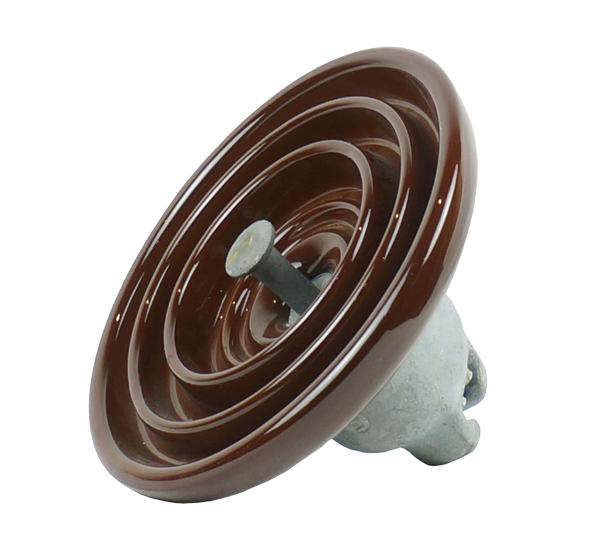High Voltage Line Using Ceramic Power Pole Insulators
Porcelain insulators on a transmission tower
Conductors and insulators play fundamentally opposite roles in electrical systems. Conductors—typically metals—allow electric current to flow easily, whereas insulators resist current, preventing unwanted paths and potential damage. Common insulating materials include plastics, rubber and leather, but under extreme voltages even these can fail. For long-term reliability on high-voltage transmission lines, engineers often choose ceramic power pole insulators—especially porcelain insulators—because of their superior resistance to electrical stress.
Ceramic insulators serve two main purposes: they electrically isolate live conductors from supporting structures and keep adjacent conductors from contacting one another. Thanks to their ionic–covalent bonds, ceramic compounds such as porcelain exhibit very low conductivity and high dielectric strength. Their low thermal conductivity also helps, since rising temperatures can encourage charge movement that undermines insulation performance. Porcelain power pole insulators combine mechanical robustness with excellent electrical properties, making them standard material for many transmission line insulators.
Configurations: pin-type and suspension insulators
Overhead-line ceramics come in two basic configurations. Pin-type insulators sit atop a support post, holding conductors securely in place, while suspension-type insulators hang beneath crossarms or towers. Although glass can offer slightly higher dielectric strength, its smooth cold surface tends to collect moisture and contaminants; porcelain’s glazed texture sheds water more readily and resists pollution, so it avoids many of glass’s operational drawbacks.
Materials and the porcelain insulator manufacturing process
Porcelain insulators are formulated from a precise blend of clay, kaolin, silica, alumina and feldspar. By adjusting the proportions—raising alumina for extra mechanical strength, for example—manufacturers tailor each batch to the demands of its intended voltage and mechanical load. After mixing the powders with water, the green body is shaped, dried, glazed and fired. This porcelain insulator manufacturing process typically uses two main shaping techniques:
Jiggering (for simple, symmetrical shapes)
A moist, clay-rich mass is placed on a rotating mold.
A profile tool scrapes the excess, forming the basic shape.
After initial drying, the part is dipped in glaze, then oven-dried and kiln-fired.
Slip casting (for intricate profiles)
Ceramic powders are dispersed in water to create a fluid slurry (the slip).
The slip is poured into a porous gypsum mold, which absorbs water through its walls.
Once a solid shell forms, excess liquid is drained, the piece is demolded, pre-fired, glazed, then subjected to final high-temperature firing (typically 1100–1300 °C).
Design goals: resist flashover and mechanical failure
Throughout production, designers optimize the insulator profile to raise the voltage threshold at which flashover or puncture might occur, ensuring the component withstands real-world pollution, wetting and mechanical stresses. By combining carefully chosen raw materials, precise shaping methods and intelligent profile design, modern porcelain insulators deliver decades of trouble-free service on overhead transmission lines.
Porcelain vs glass vs polymer insulators — quick comparison
In short: porcelain offers a balanced combination of electrical performance and mechanical strength; glass has high dielectric strength but can retain moisture on its smooth surface; polymer/composite insulators are lightweight and hydrophobic but require careful long-term aging validation. For many high-voltage transmission applications, porcelain insulators remain the conservative, proven choice.
https://elepower.cn/high-voltage-line-using-ceramic-power-pole-insulators/
